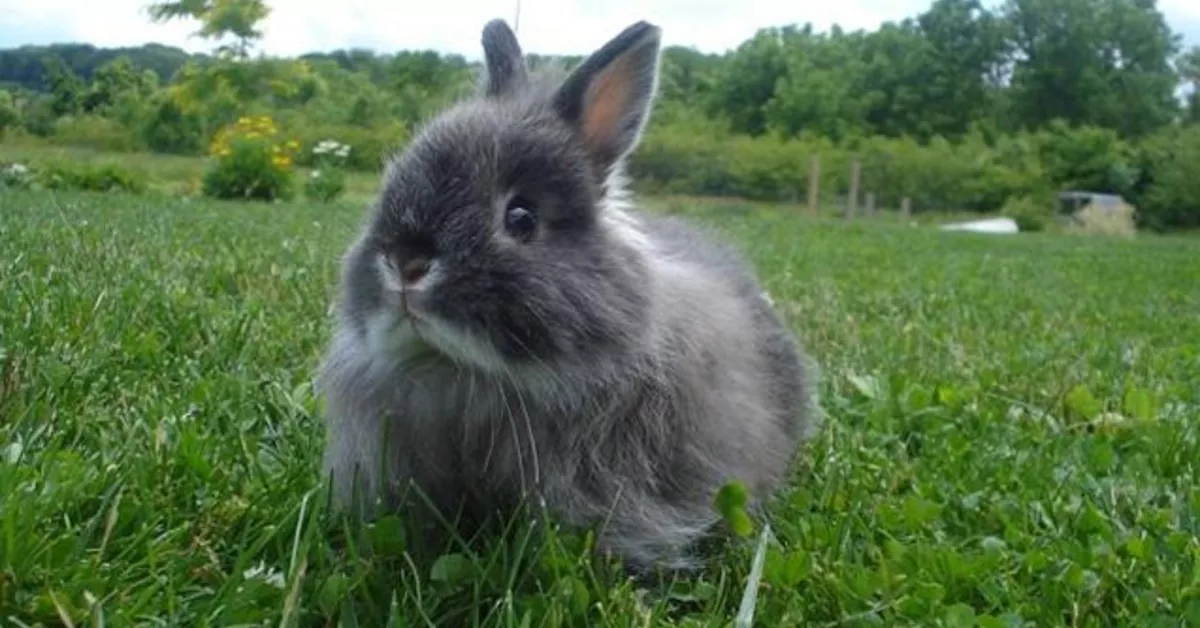Basic Appearance:
Jersey Woolies are round, compact, wooly bunnies. They are small rabbits, weighing about three pounds. They have round heads, large eyes, and small ears, giving them a “baby face” look. They have short, easy-care wool and come in a whole array of colors.
History, Temperament, and Common Uses:
As their name implies, Jersey woolies came from New Jersey. In the 1970’s, a woman by the name of Bonnie Seeley wanted to create a small, wooled rabbit that would be a good pet with an easy-care coat. She crossed a Netherland dwarf and a French angora, and from there carefully selected rabbits with the desired traits. In 1984 she had her new breed, and began the process of presenting them at the ARBA Conventions. In 1988 they were recognized, and quickly rose to be one of the top ten most popular breeds.
Jersey woolies were bred to be the perfect pet rabbit, and they have very friendly personalities. They are calm and gentle, making them good rabbits for children to start with. Although they were originally intended to be pets, they have become even more popular as show rabbits.
Grooming, Care, and Additional Notes:
The Jersey wooly, surprisingly, has a very easy-to-care-for coat. The wool is about 3 inches long, and contains a substantial amount of guard hairs. These guard hairs are what gives the wool its unique properties. They give the coat a slightly coarse texture, and keep it from tangling. Make sure the wool stays free from debris, and brush out your woolie’s coat once a week to remove dead hairs. Like any breed, your rabbit may need more frequent grooming during a molt.
Jersey woolies are posed in a natural position, not stretched out or excessively tucked up. They should hold their head high on their shoulders, showing their compact type and bold, short head.
Because of the wool on the body, the head, ears, and feet will appear darker in color than the body.
Jersey Wooly At A Glance…
Recognized Varieties:
Jersey woolies are judged by groups: Agouti, AOV(Any Other Variety), Broken, Self, Shaded, and Tan Pattern. Here are the varieties that are shown together within the groups:
Agouti: chestnut, chinchilla, opal, squirrel.
AOV: pointed white (black or blue).
Broken: any recognized breed variety broken by white.
Self: black, blue, blue eyed white, chocolate, lilac, ruby eyed white.
Shaded: blue tortoise shell, sable point, seal, Siamese sable, smoke pearl, tortoise shell.
Tan Pattern: black otter, blue otter, sable marten, silver marten (black, blue, chocolate, lilac), smoke pearl marten.
ARBA Body Type:
Compact
Approximate Size:
Ideally 3 pounds, max weight 3 1/3 pounds.
Important Things to Look for When Buying Show Stock:
A rabbit that is short, compact, and with a body that is as wide as it is deep. You will have to feel a Jersey wooly to get a good idea of its type, as the wool makes it hard to judge them correctly by site alone. Look for shoulders that are almost as wide at the hindquarters, a full midsection, and full, rounded hindquarters. Some people say a Jersey wooly should look like a Netherland dwarf with wool, but remember there are differences. They should have a topline that starts just behind the ears and rises in a gentle curve to the high point over the loins, and curve down smoothly to the base of the tail.
Jersey woolies should have a high head mount, with their head high and close to the shoulders. Look for a head that is short, wide, well filled from the ear base through the muzzle, and is in balance with the body. When viewed in profile, the head should be round from the ears to the brows, be flat from eyes to nose, and round again along the muzzle and jowls. There should be side trimmings consisting of wool along the jawline and a wool cap of short, dense wool on the head. The ears should be short, erect, of good substance, and well furred. The ideal length of the ears is 2 1/2 inches, but they should be in balance with the head and body. The tips should be slightly rounded. The eyes should look bold and bright.
The Jersey wooly should have sturdy legs, with normal fur on the front feet.
Jersey wooly wool should have plenty of guard hairs to give it the easy-care properties it is known for. The wool should have a slightly coarse texture, with a crimped underwool. The outer coat should look healthy and full of life, gently draping over the undercoat and giving it a flowing look. The wool should be very dense. When blown into, the coat should separate all the way to the skin without showing matting. Look for wool that is about 3 inches in length, and has a smooth, even outline.
Things to Avoid:
Rabbits with head or body that is long or narrow. Woolies with very long bodies will be disqualified. Topline that is flat or rough over the shoulders or hindquarters. Hindquarters that are pinched or undercut. Head with pinched muzzle. Thin ears or ears with thin fur. Ears not held errect, or scissored ears. Ears over 3 inches, or tasseled ears are a disqualification. Very fine bone. Wool below the ankle joint on the front feet is a disqualification.
Wool that is very coarse or wiry, matted or webbed, or senior rabbits with a soft or cottony coat. Thin or limp coat, bare patches, choppy or uneven looking coat, or short wool. Wool shorter than 1 1/2 inches, except on the underside, is a disqualification.


